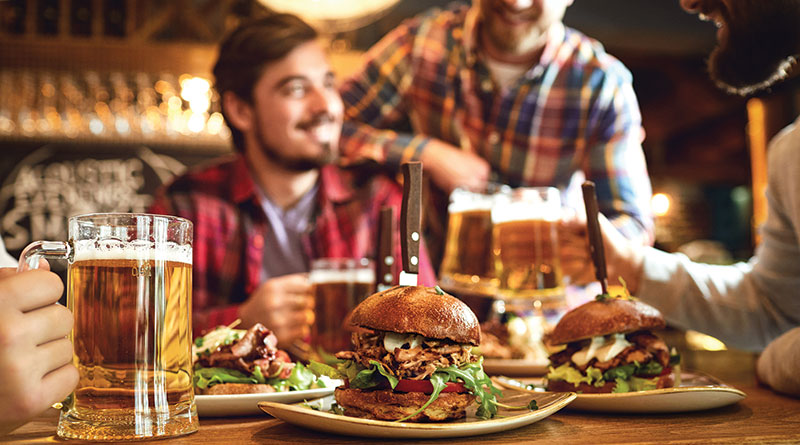Consumer Spending Bounced Back in November but Brits Eating Out Less

Spending on essential items saw a smaller increase (3.3 per cent) than in October (3.9 per cent), as falling petrol and diesel prices impacted fuel spend (-10.9 per cent). Growth at supermarkets was also lower month-on-month (5.0 per cent vs 5.2 per cent) following the easing of food price inflation and the majority of shoppers (67 per cent) seeking ways to reduce their grocery food bills.
Encouragingly, while the proportions of Brits concerned about inflation and food prices remain high (each at 86 per cent), both fell to their lowest levels since December 2021. Similar improvements were also recorded on attitudes towards fuel prices, household bills and interest rates.
Seasonal socialising
Restaurants fell further into decline in November (-11.9 per cent compared to -10.3 per cent in October), as over a third (36 per cent) reported that the cold weather and dark evenings have had an impact on their spending patterns. Nearly half (46 per cent) of these Brits are eating out less frequently in favour of cooking meals, while 29 per cent are socialising with friends and family at home instead of going out.
This perhaps explains why “insperiences” (at-home experiences) fared well in November, with spending on takeaways and fast food (6.1 per cent), as well as digital content and subscriptions (5.8 per cent) seeing greater uplifts than in October (5.6 per cent and 4.9 per cent respectively).
‘Revenge spending’ helps travel sector maintain double-digit growth
The travel sector again performed strongly in November, having recorded double-digit growth for 11 of the last 12 months, with sizeable uplifts at both travel agents (9.2 per cent) and airlines (14.0 per cent). This long run of growth has its roots in the pandemic, with a fifth (19 per cent) of consumers planning more holidays in 2024, citing that they’re still catching up on trips missed during lockdowns – a trend otherwise known as ‘revenge spending’
‘Shrinkflation’ impacts festive fare
Shoppers expect to fork out an average of £105.43 more on Christmas this year than in 2022. Festive food and drink is expected to be the largest contributor to this increase, rising by an average of £25.87, followed by gifts (+£18.62) and activities (+£11.86).
The extra expenditure is likely due to rising costs and ‘shrinkflation’, with three in five (60 per cent) noticing that some festive items are getting smaller despite costing the same. One in three (36 per cent) has spotted shrinkflation on boxes of chocolates, followed by tins of biscuits (28 per cent), cheese (15 per cent), mince pies (14 per cent) and Christmas cake (13 per cent).
Esme Harwood, Director at Barclays, said:
“Shoppers got into the festive spirit early this year, flocking to the high street to take advantage of month-long Black Friday sales, and unlocking long-awaited retail growth. Consumers were also keen to socialise, but prioritised more economical – and warmer – ways to catch-up with friends and family, choosing cosy nights in with takeaways or enjoying drinks at the pub instead of dining out at restaurants.
“November also marked a turning point for consumer sentiment – confidence in personal finances improved, with Brits starting to feel less concerned about some of 2023’s defining issues, such as inflation, interest rates, and food prices – so there are reasons to be cautiously optimistic as we look ahead to Christmas and the New Year.”
Jack Meaning, Chief UK Economist at Barclays, said:
“This data suggests consumers are continuing to spend more but get less for their money, as spending growth remains below inflation. However, the gap is narrowing as the rate of price increases slows, and we expect it to narrow further in the coming months.
“It’s reassuring to see that some of the previous weakness in spending was due to unseasonal weather, as shoppers go out and finally buy that new winter coat and get in the Christmas spirit. But the key question for the UK is what happens after the holiday period – it will take more than a festive bounce to keep consumers spending in 2024.”
